Strength After 40: Science-Backed Moves That Stop Age-Related Muscle Loss Cold
Feeling stronger after 40 is less about chasing youth and more about protecting the life you want to live. Muscle naturally declines with age—research and expert guidance estimate roughly 3–5% of lean mass is lost each decade after age 30—yet that loss is neither inevitable nor untreatable. Science shows that consistent resistance work, done with smart progression, can slow or reverse sarcopenia. In fact, clinically designed programs have produced measurable strength gains in as little as 12 weeks when they focus on compound moves, progressive overload, and adequate protein. This expanded article lays out the practical, science-backed moves and supports you’ll actually use. First there are the core exercises that deliver the biggest payoff, and then we cover planning, recovery, nutrition, safe modifications, and when to seek professional help. Each numbered section gives clear steps, beginner-friendly alternatives, and sensible progressions so you can fit the work into real life. If you’ve been worried about strength slipping away, know this: small, consistent changes stack into real, lasting improvements. Read on for a gentle but effective blueprint you can start this week, and remember that progress is a sequence of tiny wins, not a single dramatic event.
1. Goblet Squat — Build lower-body power and daily function

The goblet squat is a true workhorse for strength after 40. It trains your quads, glutes, and core in a single movement while teaching upright posture that protects your spine. Because it’s a front-loaded squat, the goblet variation feels stable and is easier on the lower back than a heavy back squat. Start with a light kettlebell or dumbbell held close to your chest. Feet should be hip-width, toes slightly turned out; sit your hips back and down as if lowering into a chair; keep your chest lifted and knees aligned over toes. Aim for controlled depth where your thighs are near parallel. For beginners, a chair-assisted squat—sitting briefly at the bottom before standing—builds confidence and strength. Perform three sets of 8–12 reps once you feel stable, and increase weight gradually when you can finish 12 reps with good form. Evidence and expert consensus point to compound leg work as a major driver of whole-body metabolic and functional benefits. If load isn’t available at home, single-leg progressions like step-ups can give similar stimulus as you advance.
2. Romanian Deadlift (Hip Hinge) — Protect your back and boost posterior strength

The Romanian deadlift (RDL) strengthens the posterior chain—hamstrings, glutes, and lower back—which becomes key for posture, balance, and power as we age. This hip-hinge pattern trains you to move from the hips rather than the spine, reducing injury risk and improving daily tasks like lifting groceries. Stand tall with a slight knee bend, hold a kettlebell or dumbbell, then push the hips back while keeping a neutral spine and soft knees. Lower the weight until you feel a firm stretch in the hamstrings, then drive the hips forward to stand. For home-friendly options, use a heavy backpack or resistance band to simulate load. Beginners should focus on mastering the hip hinge with bodyweight or band until the movement feels natural. Aim for 3 sets of 6–10 controlled reps with a focus on tempo—slow on the lowering phase—to build strength and tendon resilience. Strong posterior chains are linked to reduced lower-back complaints and better mobility in later decades.
3. Incline or Modified Push-Up — Maintain upper-body pressing strength
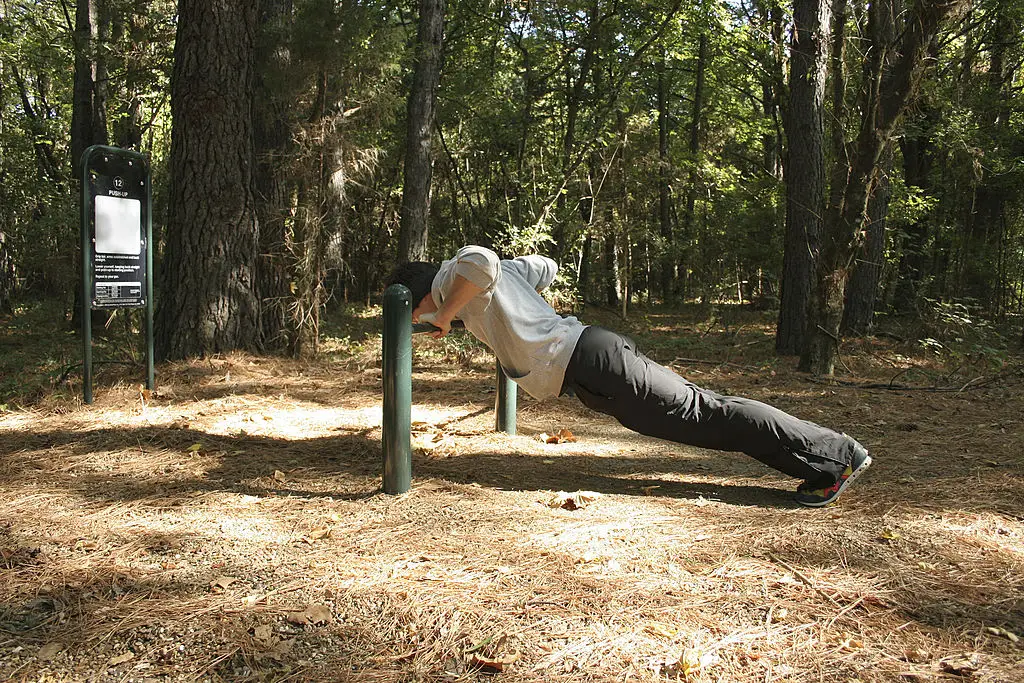
Push patterns keep your chest, shoulders, and triceps strong and support everyday functions like pushing doors or lifting light objects. Incline push-ups are gentle on the shoulders because they reduce the effective load while preserving the same movement pattern as a standard push-up. Stand facing a sturdy bench or counter, place hands slightly wider than shoulder-width, and keep a straight line from head to heels while lowering your chest toward the surface. For those with more wrist or shoulder sensitivity, wall push-ups are an easy regression. As strength improves, lower the incline until you can do floor push-ups, then add a slow eccentric (lowering) phase or a weighted vest for progression. Aim for 3 sets in the 8–12 rep range, focusing on full range of motion and controlled breathing. Including push movements balances your upper-body routine and helps prevent the forward-rolled posture that can accelerate age-related mobility limitations.
4. Bent-Over Row or Band Row — Balance pushing with pulling for posture

Pulling exercises are essential to offset the forward pull of daily life and preserve upper-back strength. Bent-over rows target the mid-back, lats, and rear delts and help maintain upright posture. With a hinge at the hips and a slight knee bend, hold a dumbbell or barbell and row toward your lower ribs, squeezing the shoulder blades together. If you don’t have free weights, anchor a resistance band at waist height and perform seated or standing band rows with the same scapular squeeze. Start with 3 sets of 8–12 reps and prioritize controlled form over load. Strong pulling muscles support better shoulder mechanics and reduce the risk of rounded shoulders, a common age-related complaint. Experts stress pairing push and pull work in each training session to keep the shoulder girdle balanced and resilient as you age.
5. Reverse Lunge — Improve unilateral strength and balance
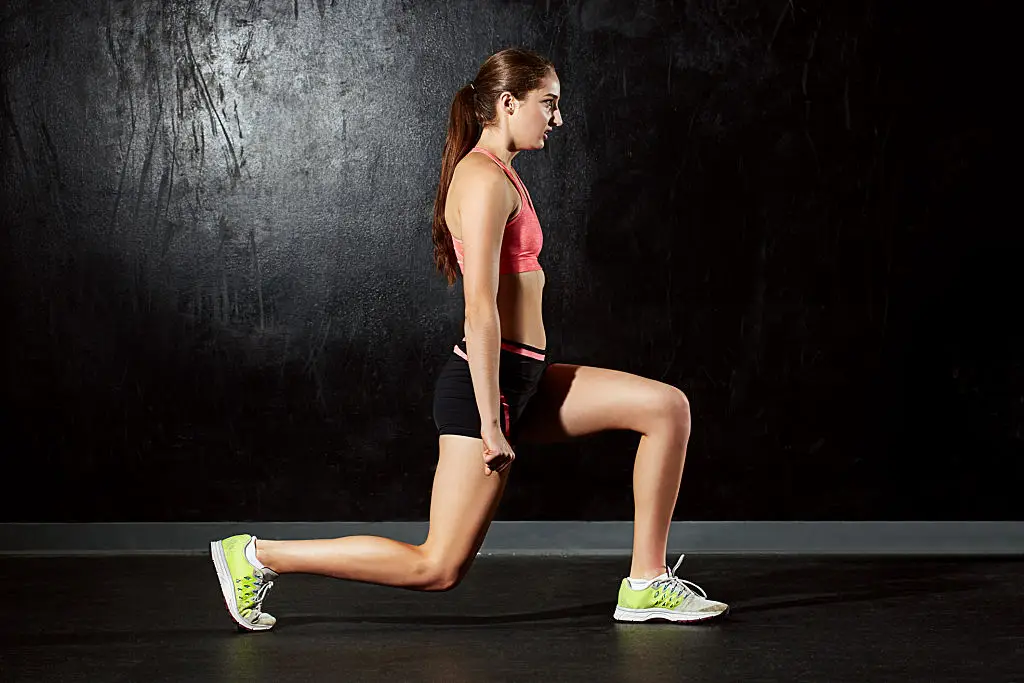
Single-leg moves like the reverse lunge attack muscle imbalances and boost balance, which lowers fall risk. Reverse lunges put less stress on the knee compared with forward lunges because the stepping foot moves back rather than forward. Begin standing tall, take a controlled step back, lower until both knees are roughly 90 degrees, then drive through the front heel to return to stand. Use a chair for light support if balance is a concern. To add load, hold dumbbells at your sides or a kettlebell in front. Perform 3 sets of 8–12 reps per leg, and consider alternating legs or doing walking lunges for variety. Unilateral strength work transfers to daily activities like climbing stairs and getting in and out of cars. For older adults, improving one-leg control often translates quickly into greater confidence moving in the real world.
6. Plank Variations — Core stability that supports movement

Core strength is more than aesthetics; it’s the foundation for safer movement and stronger lifts. Plank variations train the deep stabilizers that protect the spine while you move and lift. Start with a forearm plank, keeping a straight line from head to heels and breathing steadily. Hold for 20–40 seconds initially and build toward longer holds, or perform sets of shorter holds with brief rests. Side planks strengthen the obliques and lateral chain, which helps with twisting and single-leg stability. Modify by dropping the bottom knee to the floor or elevating your hands on a bench to reduce intensity. Progress by increasing hold time, adding leg lifts, or using a single-arm reach. Aim to include 2–3 plank variations per session for a total of 2–4 minutes of accumulated hold time. Core endurance improves posture, reduces back pain risk, and supports overall strength training efforts.
7. Farmer’s Carry (Loaded Carry) — Real-world strength and grip power

Loaded carries like the farmer’s walk are deceptively simple and extremely effective. Grip heavy objects at your sides and walk with tall posture for short distances. This trains core bracing, grip, shoulder stability, and the breath patterns you need for heavier lifts. Choose weight that challenges you for 20–60 meters while maintaining upright posture and steady breathing. If you lack dumbbells, use grocery bags or heavy household items as a practical alternative. Begin with two 30-second carries and increase distance, weight, or rounds as your capacity grows. Loaded carries transfer directly to daily tasks—carrying laundry baskets, shopping bags, or luggage—and improve the kind of whole-body strength that keeps life manageable. They also elevate heart rate, giving mild conditioning benefits alongside strength improvements.
8. 12-Week Progressive Overload Plan — Consistency beats intensity
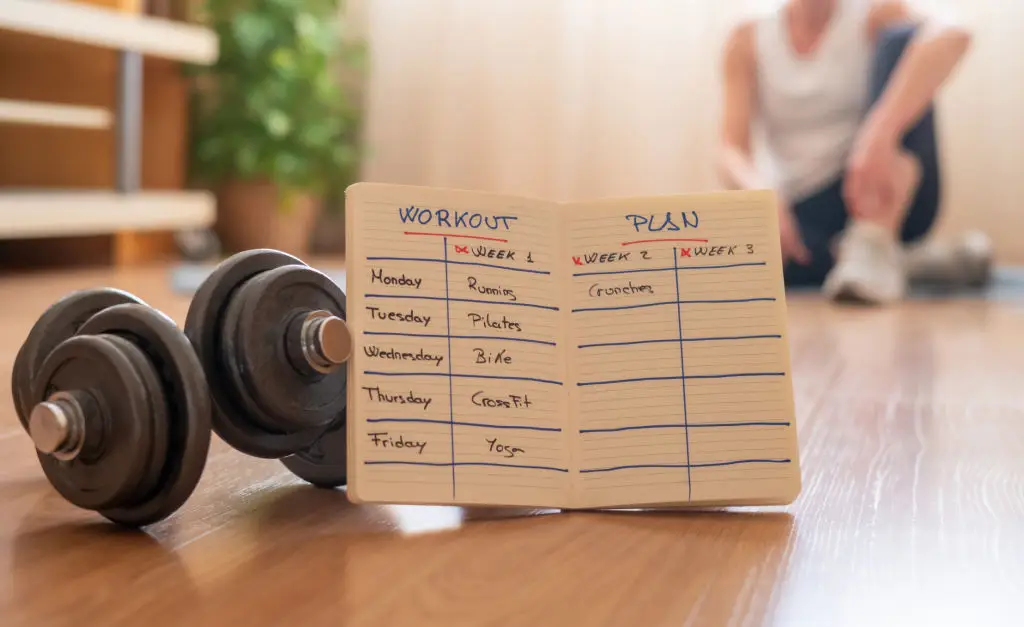
A plan is the bridge between intention and results. Research and practitioner guidance indicate that targeted resistance training over 12 weeks can reverse signs of sarcopenia when combined with appropriate nutrition. Aim for three full-body strength sessions per week, each including compound lifts from this list. Structure sessions around 3–5 exercises, using 3 sets per exercise with 6–12 reps depending on your goal—6–8 for strength, 8–12 for hypertrophy and endurance. Rest 60–90 seconds between sets and increase load or reps gradually once you can complete all sets with solid form. Track progress with simple metrics: number of reps, weight, or how many days you can walk with loaded carries. For women approaching or in menopause, a slight increase in volume or frequency may help offset hormonal shifts that accelerate muscle loss. Remember that the most important variable is consistent, progressive stimulus over months rather than extreme intensity for a few sessions.
9. Warm-up and Mobility Routine — Prime joints and reduce injury risk
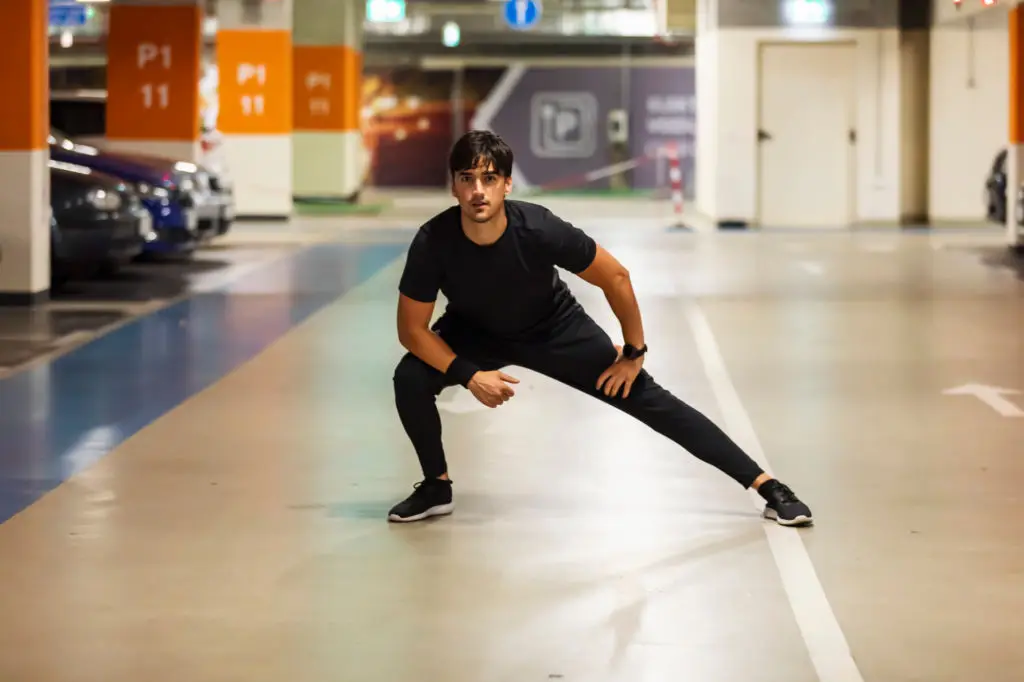
Warming up matters more with each passing decade because tendons and joints need a gentle lead-in to heavier work. A 15–20 minute routine that includes light cardio, dynamic stretches, and movement-specific mobility can reduce soreness and improve performance. Begin with 5 minutes of brisk walking or marching in place to raise heart rate. Follow with dynamic drills: leg swings front-to-back and side-to-side, hip circles, shoulder pass-throughs with a band or broomstick, and bodyweight squats to rehearse the movement patterns you’ll use. Add thoracic rotation and hip openers to ease stiffness that often comes from desk time. Finish with lighter sets of your first exercise—like goblet squats with just the kettlebell—so your nervous system and muscles are ready. This approach helps you lift more safely and recover faster between sessions, which is essential for steady progress and long-term consistency.
10. Nutrition: Protein and Timing for Muscle Retention

Nutrition is the partner to training that enables muscle repair and growth. Older adults often benefit from slightly higher protein targets than younger people because of reduced muscle protein synthesis sensitivity. Aim for roughly 1.0–1.2 grams of protein per kilogram of body weight per day as a practical starting point, and consider roughly 20–40 grams of protein per meal with a protein-rich serving after workouts to support recovery. Lean sources like poultry, fish, dairy, legumes, and eggs are easy to prepare. If appetite is lower, protein-dense smoothies or fortified yogurts can bridge gaps. Hydration and adequate calories matter too—training when under-fueled slows progress. While supplements aren’t required, a whey or plant-based protein shake can add convenience when whole-food meals are not possible. Pairing smart nutrition with resistance training is the clearest route to preserving or rebuilding muscle after 40.
11. Recovery: Sleep, Deloads, and Active Rest

Recovery is where gains are consolidated. Muscle rebuilds between sessions, and both sleep and planned rest days are non-negotiable parts of a sustainable plan. Aim for consistent sleep—seven to nine hours per night when possible—because poor sleep blunts muscle-building signals and mood. Build deload weeks into your program every 4–8 weeks where you reduce volume by 30–50% to allow tendons and joints to recover. Active rest activities such as walking, gentle yoga, or mobility sessions keep blood flow high without adding training stress. Pay attention to soreness patterns: persistent, heavy soreness that doesn’t resolve in a few days suggests you may need to ease the load. Recovery strategies like contrast baths, light massage, or simply prioritizing restful habits can improve readiness for the next training block. Think of rest as a performance tool, not a reward for finishing workouts.
12. Equipment-Free and Band Modifications — Strength when you’re at home
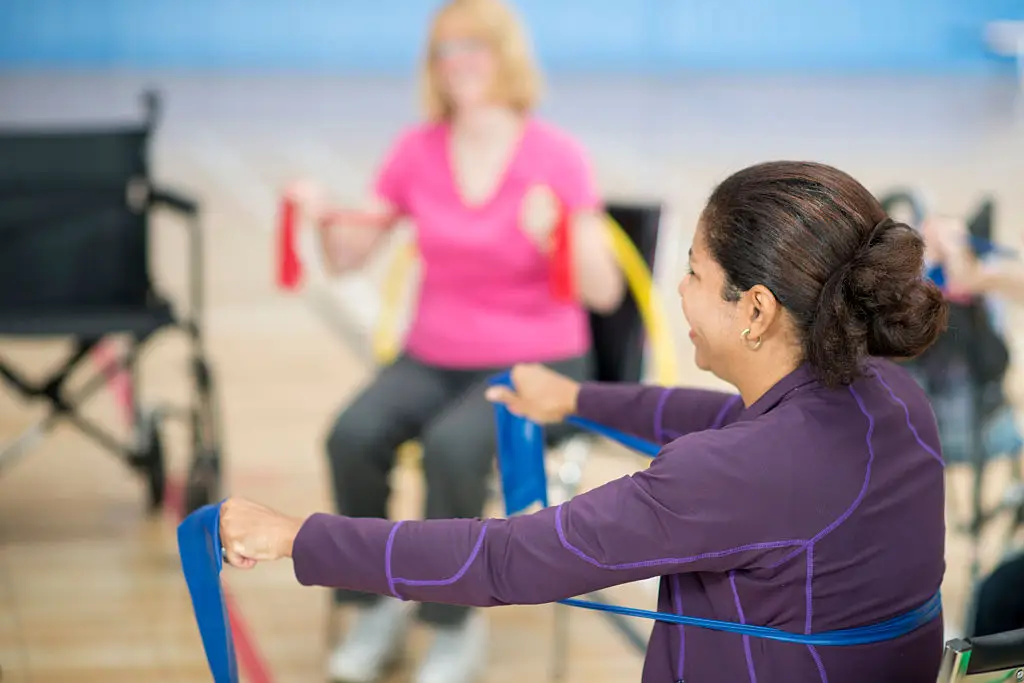
You don’t need a gym to keep and gain strength. Many of the moves above translate to bodyweight or band variations that are both effective and accessible. Chair squats, wall push-ups, banded RDLs, and seated rows with a loop band give clear progress paths. Use household items—water jugs, filled backpacks, or grocery bags—as temporary weights for carries and deadlift patterns. To increase difficulty without more equipment, slow the tempo, add pauses at the bottom of a rep, or increase time under tension. For those short on time, two 15–20 minute sessions per day can equal one longer session and reduce fatigue. Bands are especially useful for older adults because they offer variable resistance and are joint-friendly. With careful progression, equipment-free routines can still trigger strength gains and preserve functional independence.
13. Safety, Screening, and When to See a Pro — Know when to get help

Safety matters and a quick screening helps you train with confidence. If you have chronic conditions, recent surgeries, uncontrolled hypertension, or unexplained pain, check with your healthcare provider before starting a new resistance program. Simple at-home screens—like being able to stand from a chair without using hands, walk safely for a few minutes, or perform a bodyweight squat—give a baseline of function. If you experience sharp joint pain, dizziness, or persistent numbness during exercise, stop and consult a professional. Working with a physical therapist or certified trainer for a few sessions can pay dividends by correcting form, addressing mobility limits, and tailoring load progression. Look for coaches with experience training older adults and who emphasize movement quality rather than only heavier loads. A few guided sessions can prevent setbacks and help you move more effectively toward your strength goals.
14. Isometric Holds — Neurological Strength and Joint Protection
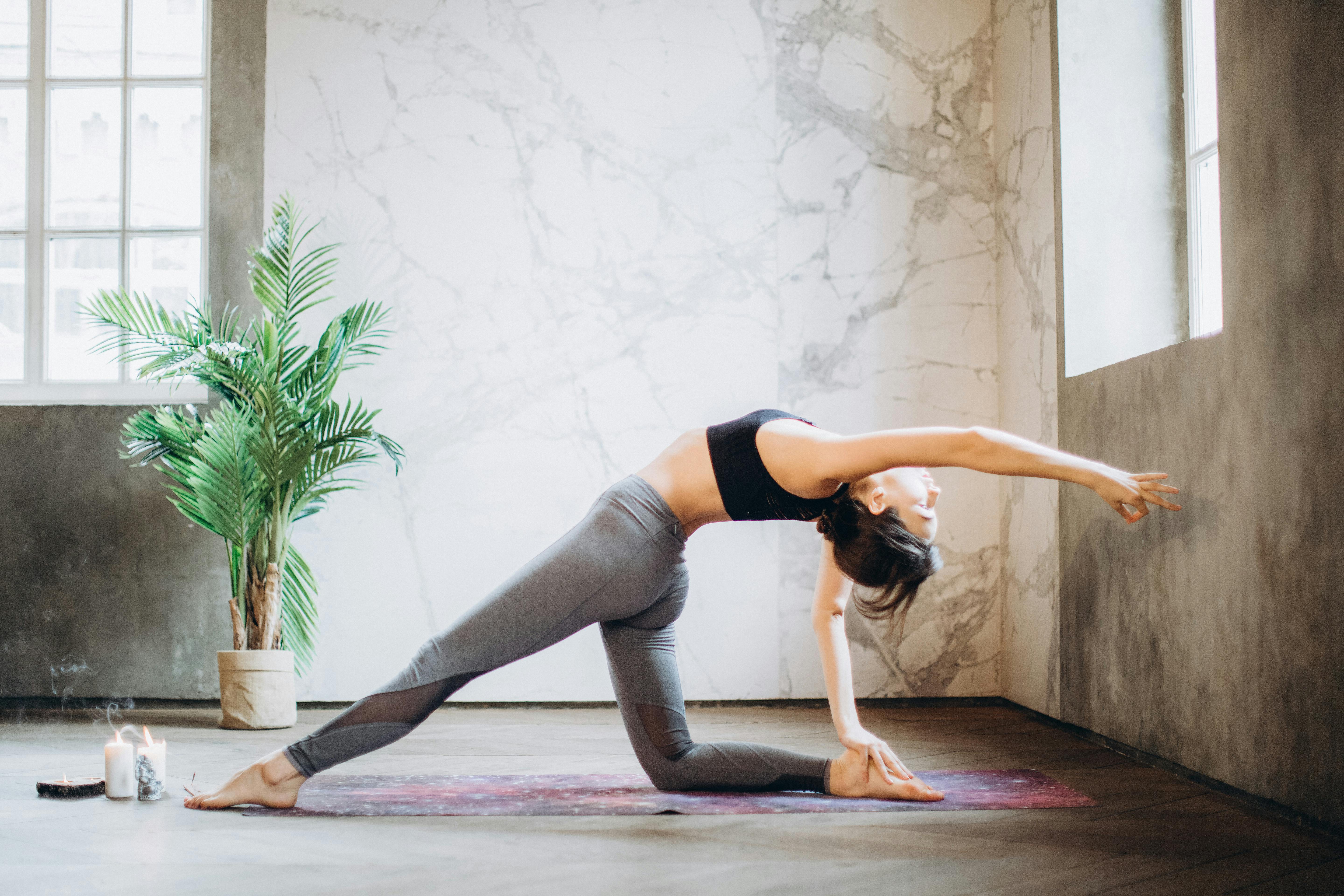
Isometric exercises—holding a muscle under tension without moving the joint—are powerful tools, especially after 40. They build neurological strength (the ability of the brain to recruit muscle fibers) without putting high shearing stress on joints or tendons. After a warm-up, incorporate long, high-tension holds into your routine: hold a low Goblet Squat position for 20 seconds, or hold the top of a Bent-Over Row squeeze for 5 seconds. This technique is clinically effective for managing tendon pain and can improve stability during the sticking points of a lift. For those recovering from injury or dealing with arthritis, isometrics offer a safe way to stimulate muscle fiber recruitment and strength gains, maintaining muscle quality while the body heals.
15. The "Walk Test" — A Functional Progression Metric

To make progress tangible and functionally relevant, incorporate a simple, timed Walk Test as a measurable progression metric. Traditional metrics focus on gym performance (e.g., squat weight), but functional strength is best tracked in the real world. Once a month, time yourself walking 30 meters carrying half your bodyweight (or a set, manageable load like two 1-gallon jugs) in the Farmer’s Carry position. Record the time. As your core stability, grip strength, and overall endurance improve, your time will decrease. This test reinforces that your training directly improves your ability to manage real-life effort. It’s an engaging, non-intimidating way to see the multiplying effect of your strength work beyond the gym mirror.
16. Foot and Ankle Mobility — Ground-Up Stability
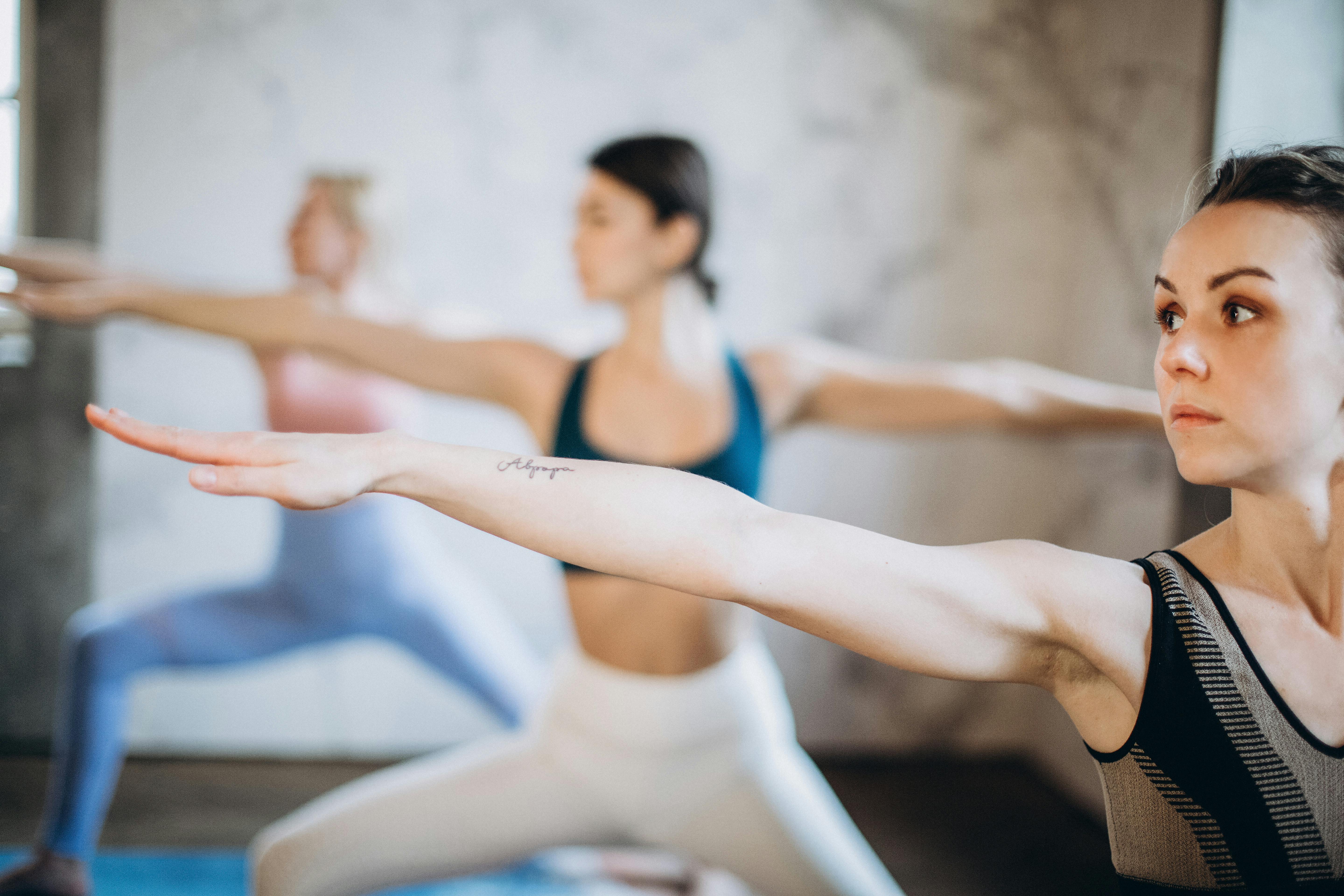
True lower-body strength starts with the feet and ankles, which often become stiff and weak with age, undermining balance and squat depth. Address this foundation with a 5-minute pre- or post-workout routine. Focus on Toe Splay and Grip (spreading toes wide, then trying to grab the floor) and Ankle Alphabet (drawing the letters of the alphabet with your foot). Crucially, practice a Supported Single-Leg Stance on an uneven surface (like a folded towel) to activate foot and ankle stabilizers. This ground-up stability ensures that the power you build in your hips and thighs is securely transferred through a solid, mobile foundation, significantly improving balance and reducing knee or ankle strain during compound lifts.
17. Hormonal Context: Menopause and Andropause

Understanding your hormonal context after 40 is essential for optimizing recovery and gains. For women in perimenopause or menopause, the drop in estrogen makes muscle loss accelerate and recovery slower. Increasing protein intake and slightly raising training volume or frequency can help counteract this. For men experiencing andropause (age-related testosterone decline), prioritizing sleep and managing stress become paramount, as poor sleep severely blunts testosterone's role in muscle repair. If training intensity feels unsustainable, a brief consultation with a physician about lab work and targeted nutrition can be highly beneficial. Knowing how your body's chemistry changes allows you to train smarter—not harder—to maximize the return on your effort.
18. Deliberate Cold Exposure — Metabolic and Inflammatory Reset

While ice baths are extreme, short, deliberate cold exposure (e.g., 2–3 minutes of cold water at the end of a shower) offers a unique metabolic and inflammatory reset that aids recovery. The sudden cold blast improves peripheral circulation by forcing blood vessels to constrict and then rapidly dilate upon warming, helping to clear metabolic byproducts from tired muscles. Furthermore, cold exposure has been shown to improve mood and focus and may activate beneficial cold-shock proteins. This is a non-exercise tool that addresses the systemic inflammatory load and nervous system state, making you feel more mentally and physically ready for the next training session, which supports the consistent progression necessary for long-term strength retention.
19. Tempo Training (Time Under Tension) — Maximizing Fiber Recruitment
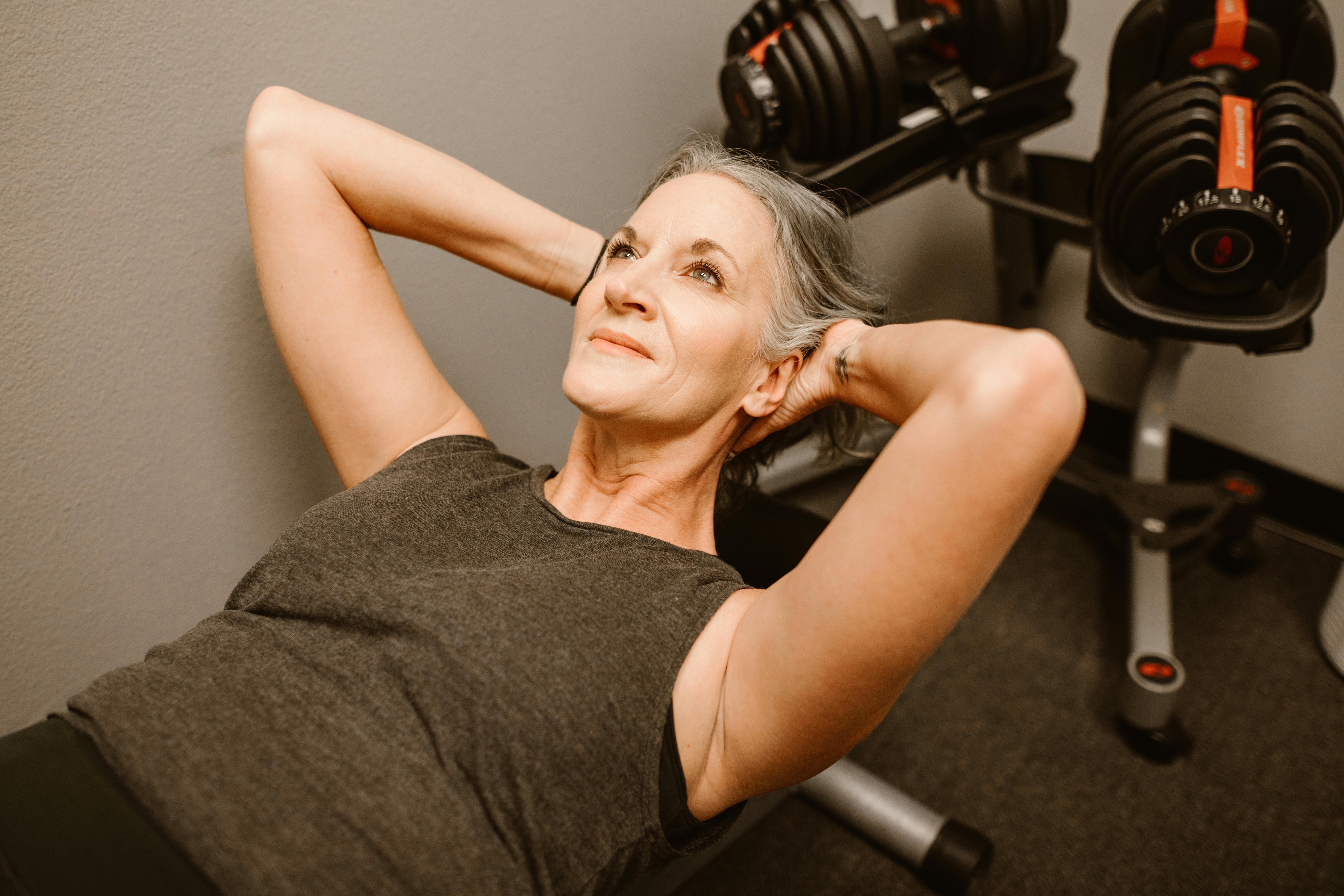
To get more out of lighter weights and reduce joint stress, incorporate tempo training, a technique that intentionally controls the speed of each phase of a lift. Instead of moving quickly, use a count: for a Goblet Squat, try 4 seconds down, 1 second pause at the bottom, and 2 seconds up (4-1-2). This increases time under tension , forcing your muscle fibers to work harder, which is key for hypertrophy (muscle growth) and tendon resilience, even with light loads. The slow eccentric (lowering) phase, in particular, is proven to stimulate strength gains more effectively in older adults. Use a simple clock or mentally count the seconds. This method is highly engaging, demanding intense focus, and is a safe, joint-friendly way to introduce a new stimulus when you aren't ready to add more weight.
20. Pallof Press — Anti-Rotation for Spinal Stability
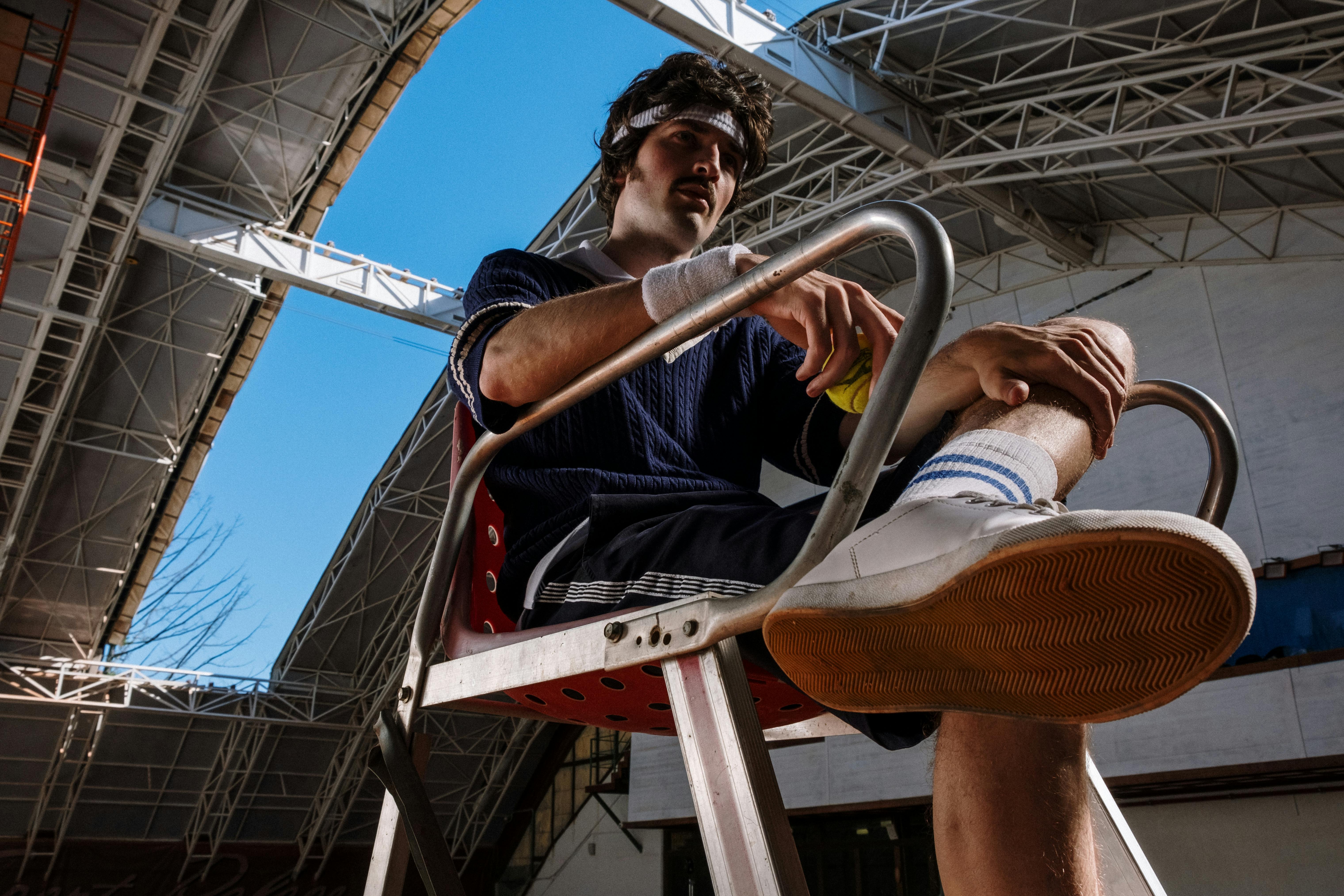
The Pallof Press is the gold standard exercise for anti-rotation, training your core not to move, which is critical for protecting the spine during all rotational sports, lifting, or sudden real-world movements (like quickly turning to catch a falling object). Anchor a resistance band or cable at chest height. Stand perpendicular to the anchor point, holding the handle with both hands pressed against your sternum. Step away to create tension. Brace your core and, resisting the band's pull trying to rotate you, slowly press your hands straight out in front of you. Pause for two to three seconds with arms extended, then slowly return. Perform 8–10 reps per side. This isometric resistance forces the deep stabilizing muscles—the obliques, transversus abdominis, and lower back—to work intensely, creating a rigid, protected torso that improves transfer of power and prevents debilitating rotational strain.
21. Diaphragmatic Breathing and Intra-Abdominal Pressure (IAP)
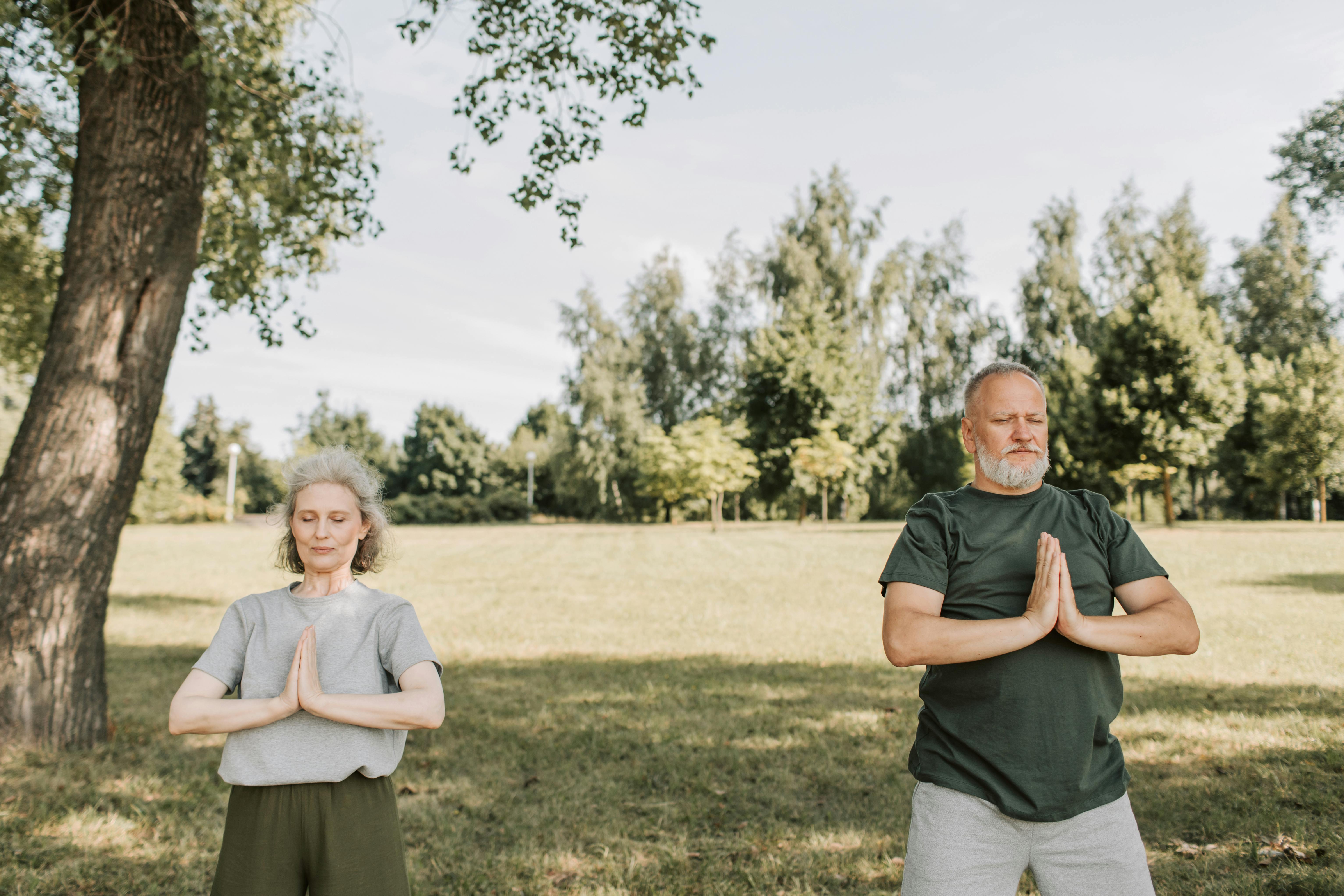
Before moving weight, you must build spinal stability, and that starts with your breath. Diaphragmatic breathing (belly breathing) is the foundation for creating Intra-Abdominal Pressure (IAP)—your body's natural weight belt. Properly engaging your diaphragm and bracing your core before a lift (like a squat or deadlift) stiffens the torso, significantly reducing shear forces on the spine and increasing the amount of force your limbs can safely produce. Practice lying down: inhale deeply, pushing your belly outward (not just your chest), then exhale fully. When lifting, perform a 360-degree brace: inhale, expand your abdomen against your belt or hands, then hold that pressure while executing the movement. Mastering this technique is a game-changer for longevity and strength gains.
22. The Box Squat (Depth Confidence and Glute Activation)

The Box Squat (using a stable chair or box behind you) is a scientifically proven way to teach proper squat depth and activate the powerful gluteal muscles, which often become underactive with age. Stand in front of a box where your thighs will be parallel to the floor when seated. Start by sitting back onto the box, briefly touching the surface, and then driving up immediately. The box provides a safety cue for depth, allowing you to load your hips properly without worrying about falling backward. This move helps retrain the motor pattern of rising from a low surface and allows you to add load progressively while maintaining excellent form, accelerating strength gains in the hips and thighs.
23. Hanging or Active Bar Hang — Decompress Spine and Build Grip
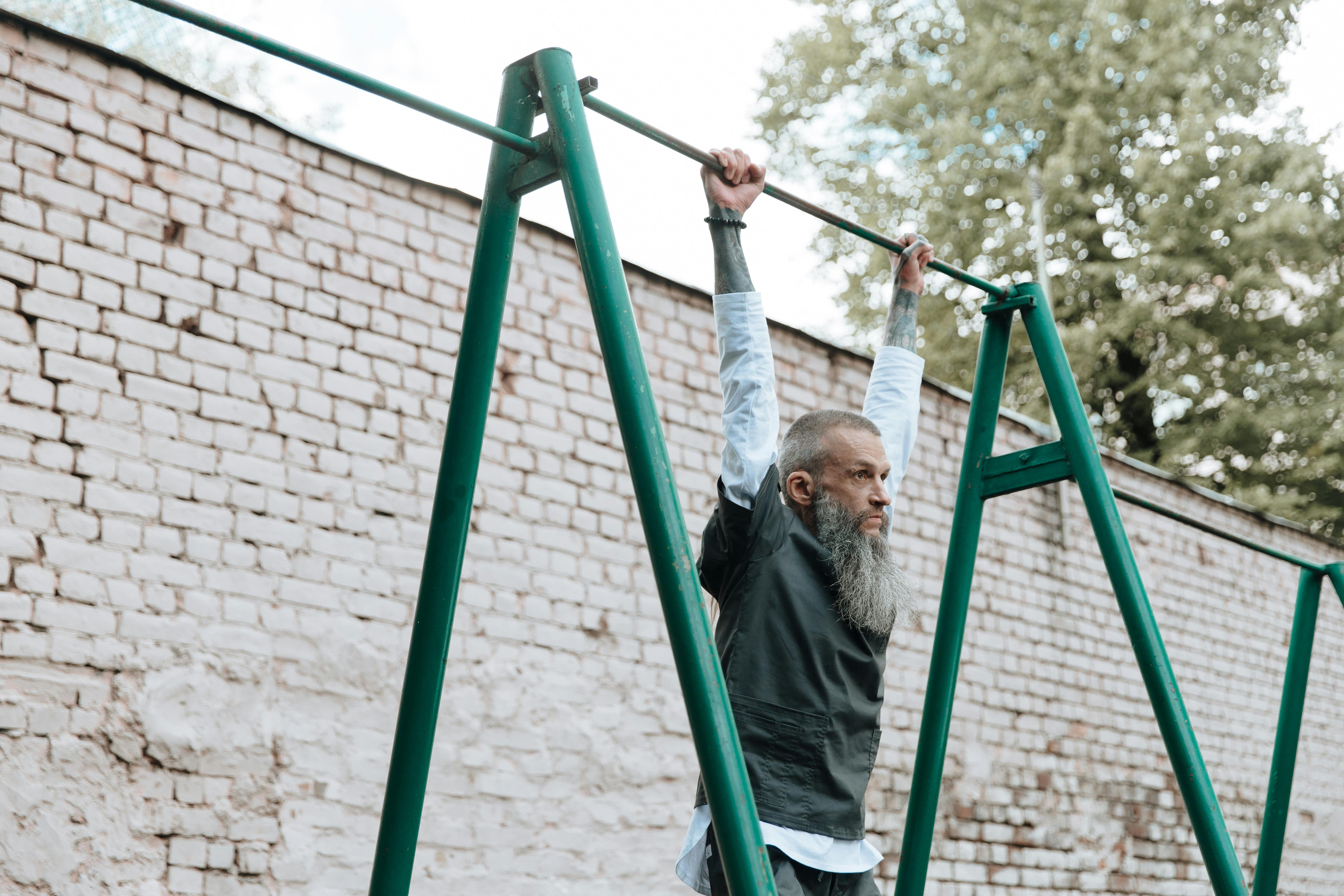
Hanging from a pull-up bar is one of the most underrated exercises for shoulder health and spinal decompression. Simply grabbing a bar and hanging (even with feet lightly touching the floor for support) uses gravity to gently stretch the spine, counteracting the compression of daily sitting. More importantly, it builds immense grip strength and shoulder stability by engaging the lats and rotator cuff in an overhead position. Start with 10–20 second active hangs, where you pull your shoulders down away from your ears rather than just dangling loosely. This active engagement strengthens the shoulder girdle in a position many older adults lose access to, restoring overhead mobility and functional reach.
24. The Figure-Four Hip Lift (Lateral Strength and Gait Security
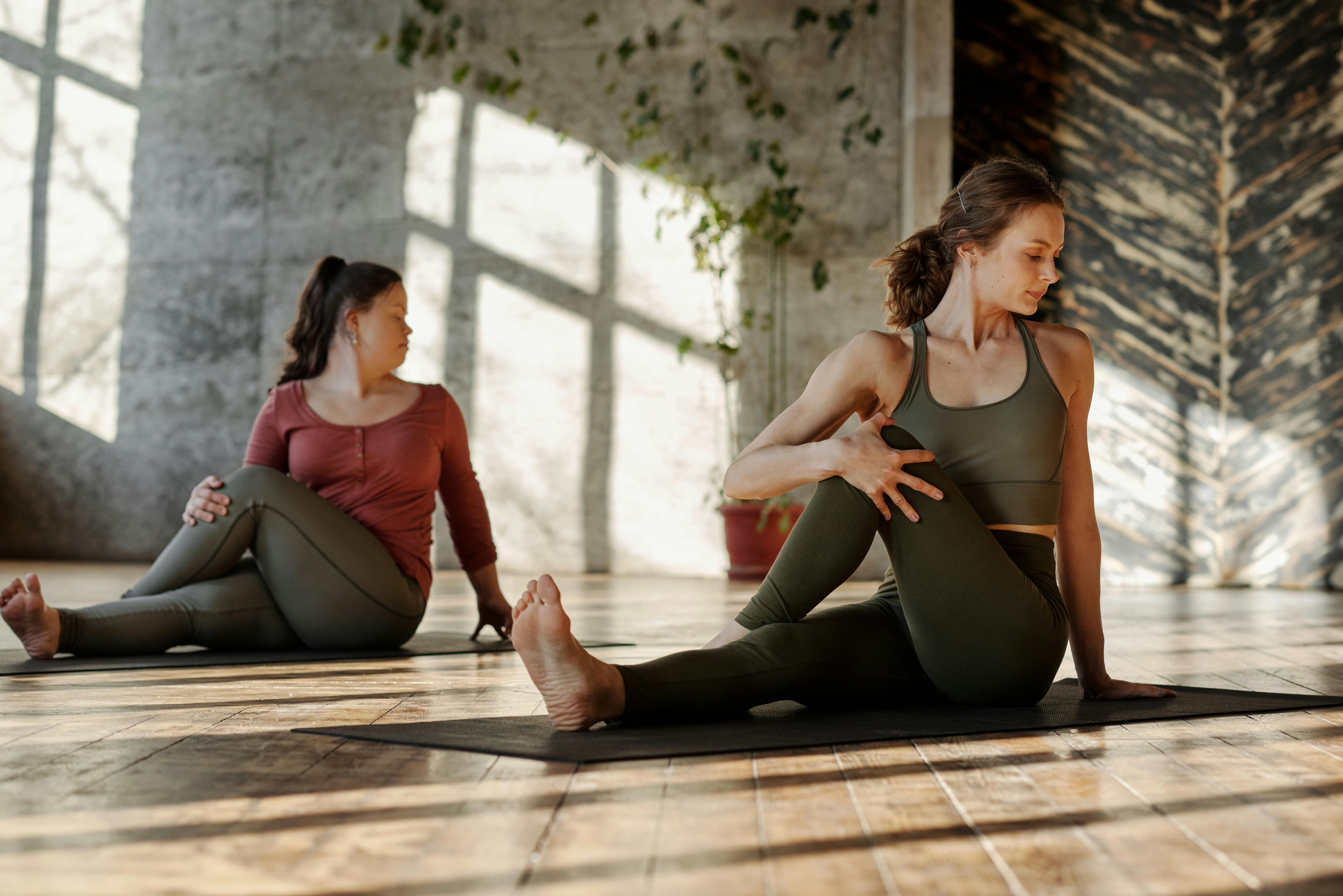
The Figure-Four Hip Lift is a low-impact, bodyweight move that is exceptional for strengthening the lateral chain and improving gait stability—the ability to walk without swaying. Lie on your back with knees bent and feet flat. Cross your right ankle over your left knee (forming a "4"). Now, drive down with your left foot and lift your hips toward the ceiling. Hold the peak of the lift for three seconds, focusing the effort on the left glute and oblique (your stabilizing muscles). This move forces the gluteus medius and minimus—the muscles responsible for preventing your pelvis from dropping when walking—to fire intensely. It builds stability for single-leg actions like climbing stairs and standing on one foot, reducing the "wobble" that increases fall risk. Aim for 3 sets of 10–12 controlled reps per leg.
25. The Spiderman Plank Rotation (Integrated Core and Hip Mobility)
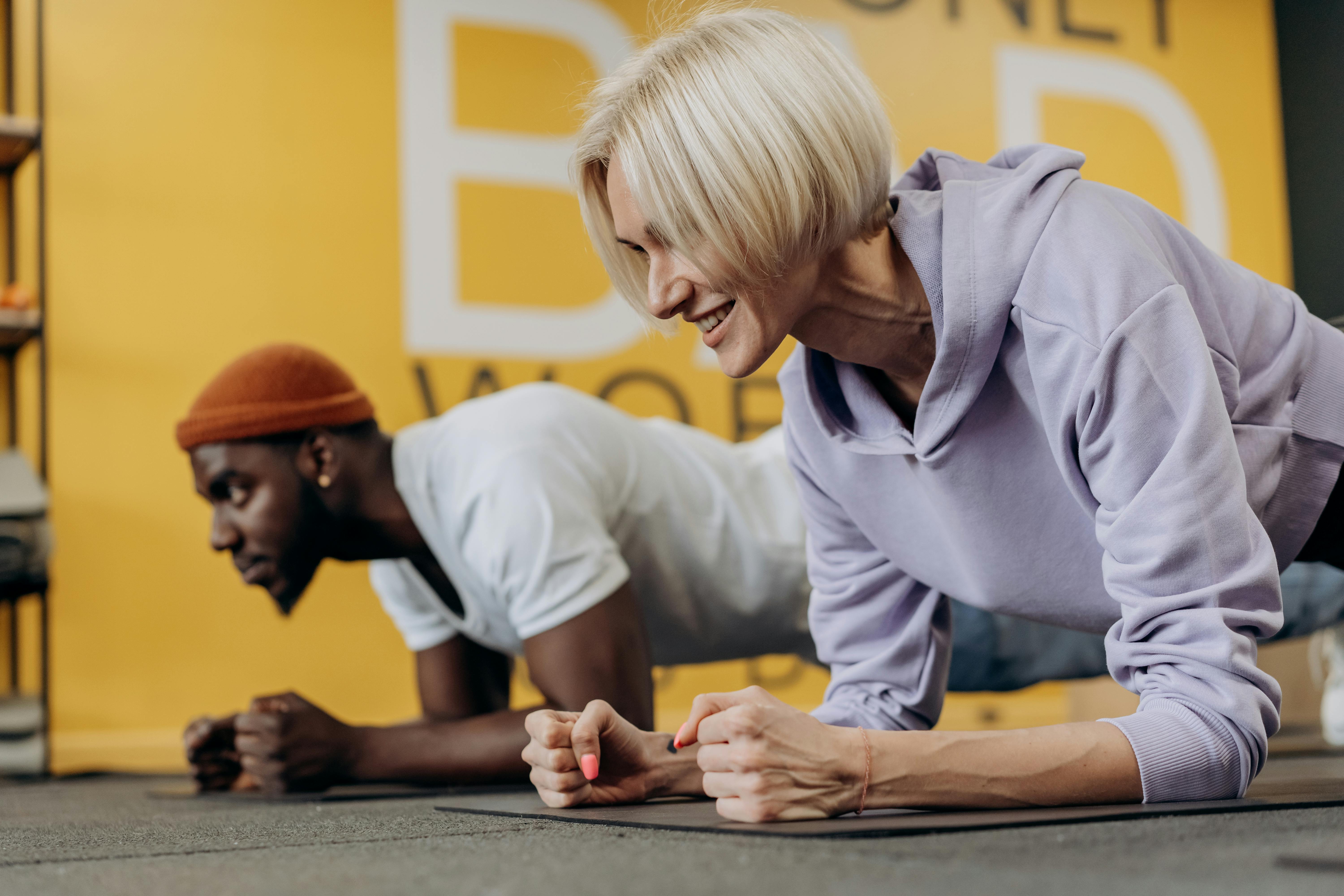
This dynamic movement integrates deep core stability with essential hip mobility and cross-body coordination—skills critical for fluid gait and preventing falls during quick turns. Start in a high plank position . Slowly bring your right knee outside toward your right elbow, holding briefly. Return, then repeat by bringing your left knee toward your right elbow (a rotational cross-body move). The crucial addition is the Hip Flexor Lift: from the cross-body position, lift your foot slightly higher to clear the floor, mimicking the action needed to step over a curb or clear a rug. This combination strengthens the anti-rotation core stabilizers while actively mobilizing the hips and training the lift required for trip avoidance. Perform 3 sets of 6–8 total knee lifts, moving slowly to ensure control and spinal safety.
26. The Single-Leg Supported Hip Hinge (Balance and Posterior Chain)

This exercise elegantly combines balance training with posterior chain strengthening, which is crucial for reducing lower back strain and improving real-world lifting. What it trains: Unilateral hamstring, glute, and lower back strength, while significantly challenging the ankle and hip stabilizers of the standing leg. How to do it: Stand near a wall or sturdy counter. Shift your weight to one leg (slight knee bend). Keeping your back long and flat, slowly hinge forward at your hip, allowing the opposite leg to extend straight behind you until your torso is near parallel to the floor. Return by squeezing the standing glute. Why it helps: This move directly translates to the stability needed for safely bending down to tie a shoe, picking up an object, or recovering from a step or trip, all while strengthening the muscles that support upright posture. Aim for 3 sets of 8–10 controlled, slow reps per leg, using light support as needed.
27. The Piston March (Hip Flexor Power and Gait)

This exercise targets the hip flexors and the neural coordination needed for a fluid, strong walking gait, directly combating the tendency toward a shuffling or shortened stride. What it trains: The ability to rapidly lift the knee (hip flexion) under control and power. How to do it: Stand tall, holding onto a chair for balance. Lift one knee high toward your chest, hold the peak position for one second, then deliberately press the foot back down toward the floor, engaging the quad and glute. Immediately repeat the lift and push-down motion rhythmically, moving the leg like a piston. Focus on controlled, powerful vertical motion, not speed. Why it helps: Strong hip flexors are crucial for clearing your toes over obstacles, making stair climbing easier, and maintaining the dynamic stability essential for confident walking and mobility. Aim for 3 sets of 10-12 focused reps per leg.
28. The BFR (Blood Flow Restriction) Arm Curl/Extension
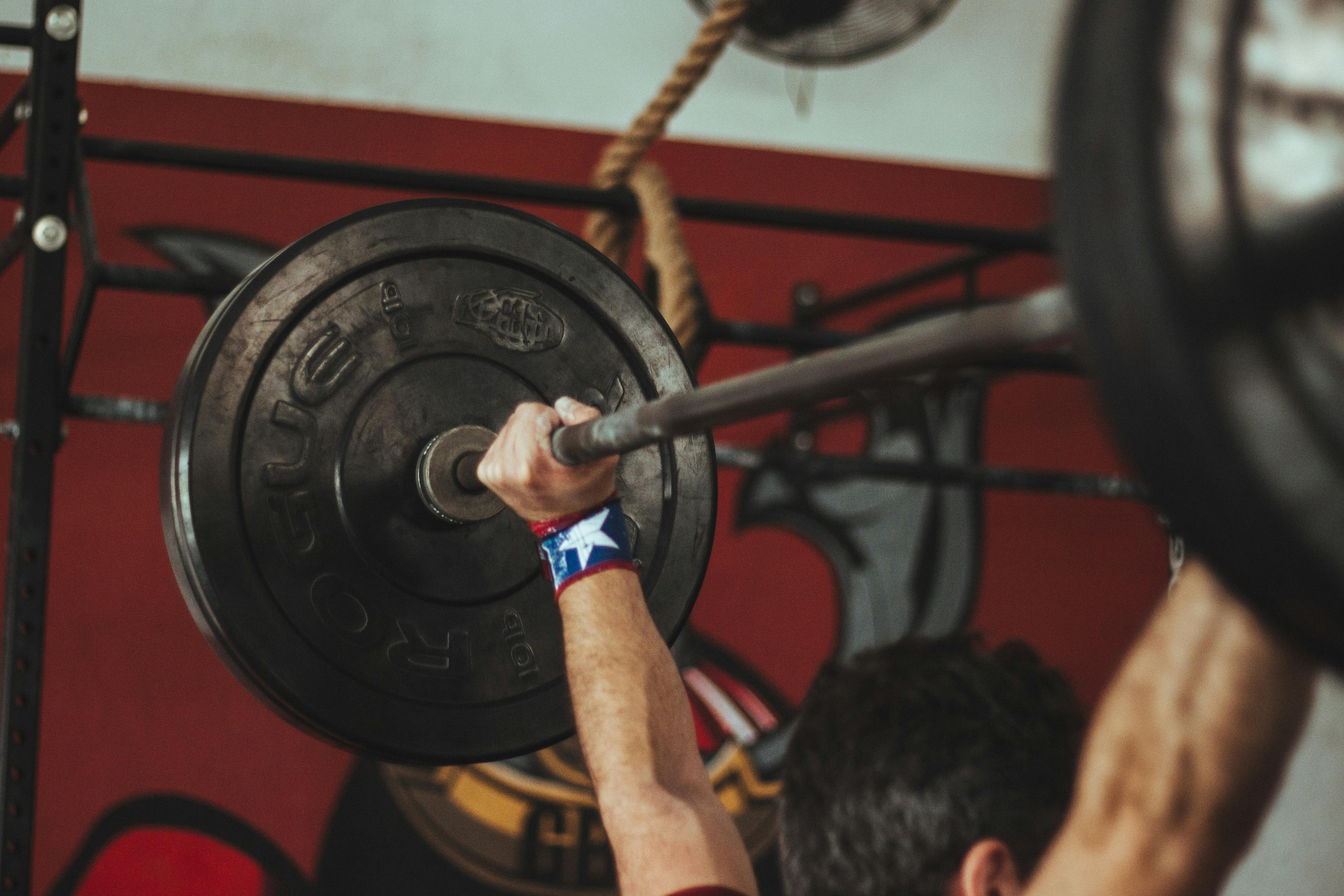
This technique uses very light weights combined with external pressure to simulate a heavy workload, offering powerful muscle growth stimulus while protecting joints. What it trains: Biceps and triceps, focusing on metabolic stress and local muscle fiber exhaustion. How to do it: Wrap a light resistance band or specialized cuff high on your arm (just below the shoulder) to restrict venous blood flow (it should feel tight, but not painful). Perform 3 sets of 20–30 high-repetition curls and extensions using a very light weight (1-3 lbs). Why it helps: BFR triggers a huge metabolic buildup (the "pump") and growth hormone release without heavy mechanical tension, making it ideal for stimulating muscle protein synthesis, especially for people managing chronic joint or tendon pain in the elbows or shoulders. Immediately remove the band after the last set.
29. Isometric Wall Push: The Joint-Safe Power Reset

As joint surfaces change with age, standard pressing movements like bench presses can sometimes feel aggressive on the cartilage. The Wall Push is an isometric exercise that generates maximum central nervous system output and muscle fiber recruitment with zero joint movement. Stand facing a solid wall. Place your hands at chest height, slightly wider than your shoulders. Step one foot back for stability. Take a deep diaphragmatic breath, brace your core, and attempt to push the wall away with 100% effort for 6–10 seconds. Do not let your elbows lock; keep a micro-bend. This high-intensity "pulse" forces your brain to recruit "sleeping" fast-twitch muscle fibers in your chest, triceps, and shoulders. Because there is no motion, there is no friction in the shoulder joint, making it a "cheat code" for maintaining upper-body pushing force during flare-ups or when you lack heavy weights.
30. The Suitcase Carry — Pure Lateral Core Strength and Anti-Shear Training

The Suitcase Carry is the ultimate functional core exercise for individuals over 40 because it trains anti-shear strength, directly protecting the spine from the lateral strain of everyday life. What it trains: Instead of carrying a weight in each hand (like a Farmer’s Carry), hold a heavy load (dumbbell, kettlebell, or briefcase) in one hand only. Walk normally for distance or time, keeping your chest tall and shoulders level. Your core, primarily the obliques and quadratus lumborum, must fire intensely to prevent the load from pulling your torso sideways. Why it helps: This movement translates directly to real-world resilience—carrying heavy luggage or a child, or stabilizing your torso during an accidental slip—where lateral forces threaten spinal alignment. It corrects the foundational, rotational weaknesses that often lead to lower back pain. Start with 3 sets of 20–30 meters per side, focusing on maintaining a perfectly upright posture against the weight’s pull.
31. Hip 90/90 Lift-Offs — Unlocking Hip Mobility and Rotational Power
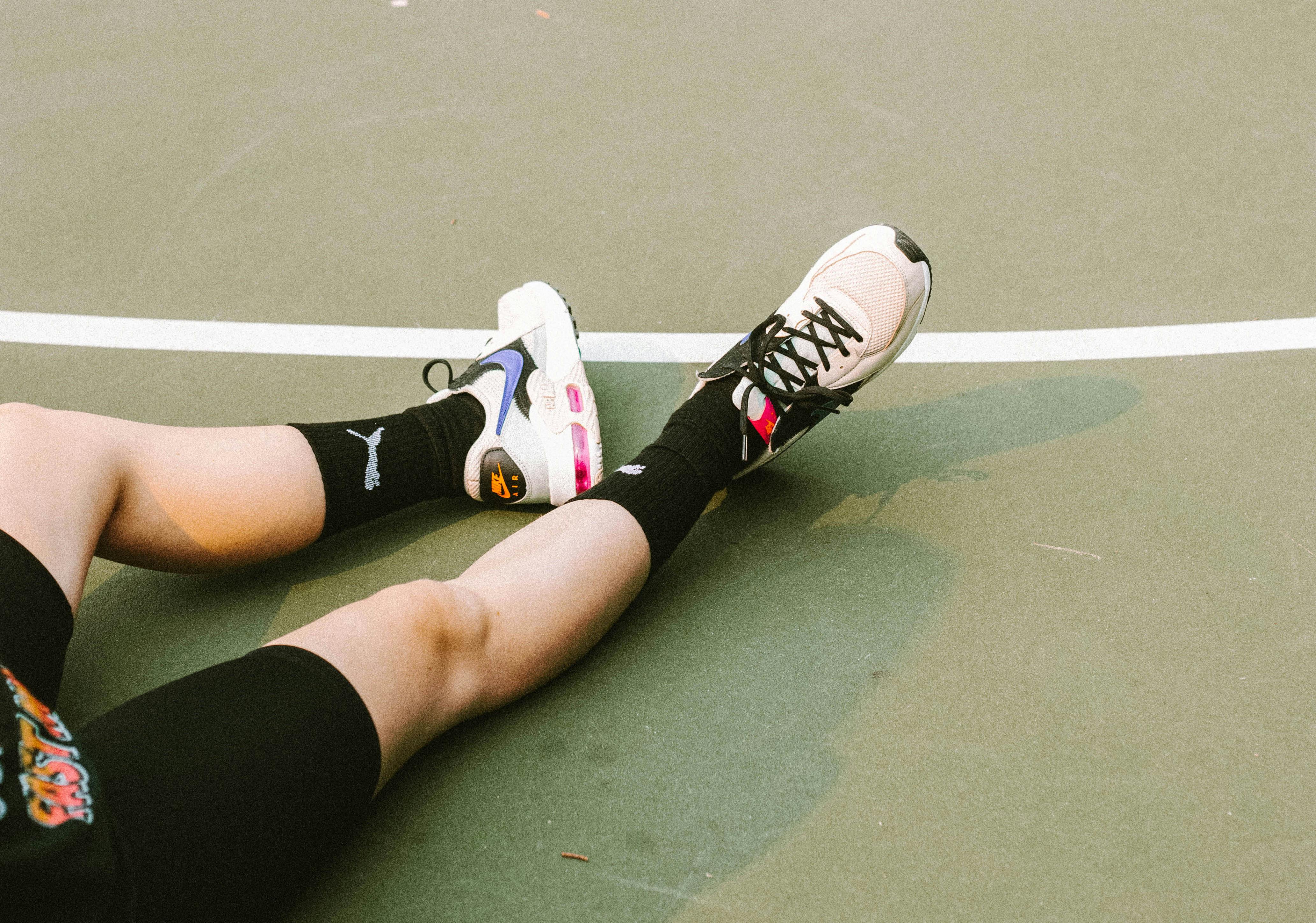
Restricted hip rotation limits power and increases stress on the lower back and knees during compound lifts. The 90/90 position directly targets this restriction. What it trains: Sit on the floor with both knees bent at 90 degrees, one leg forward (internal rotation), one leg back (external rotation). Maintaining an upright, braced torso, lift the heel of your front leg a few inches off the floor using only your hip flexors and rotators. Hold for 3 seconds, then return. Next, attempt to lift the ankle of your back leg. Why it helps: This is an isometric/mobility exercise that builds active strength and control at the end ranges of hip rotation. Improving this rotational capacity is crucial for better squat depth, safer lunges, and reducing the stress transferred to the lumbar spine, protecting joint longevity and increasing power potential. Aim for 3 sets of 5 slow, controlled lift-offs per side.
32. Heel-to-Toe Walk (Tandem Gait) — Sharpening Proprioception and Fall Prevention

The heel-to-toe walk, or tandem gait, is a foundational exercise used by physical therapists to specifically challenge proprioception (your body’s sense of where it is in space) and static/dynamic balance. What it trains: Slowly walk in a straight line, placing the heel of your front foot directly against the toes of your back foot on every step. This narrow base forces the deep muscles of your feet, ankles, and core to activate maximally to prevent swaying. Why it helps: This drill directly improves the control needed to navigate uneven terrain, walk confidently in the dark, or quickly recover from a trip—scenarios where falls are common. It also enhances the neural communication between your brain and your stabilizers. Start with 3 sets of 10 steps forward and backward, gradually increasing the distance as your balance improves.
33. Half-Kneeling Chop and Lift — Rotational Stability and Power Transfer
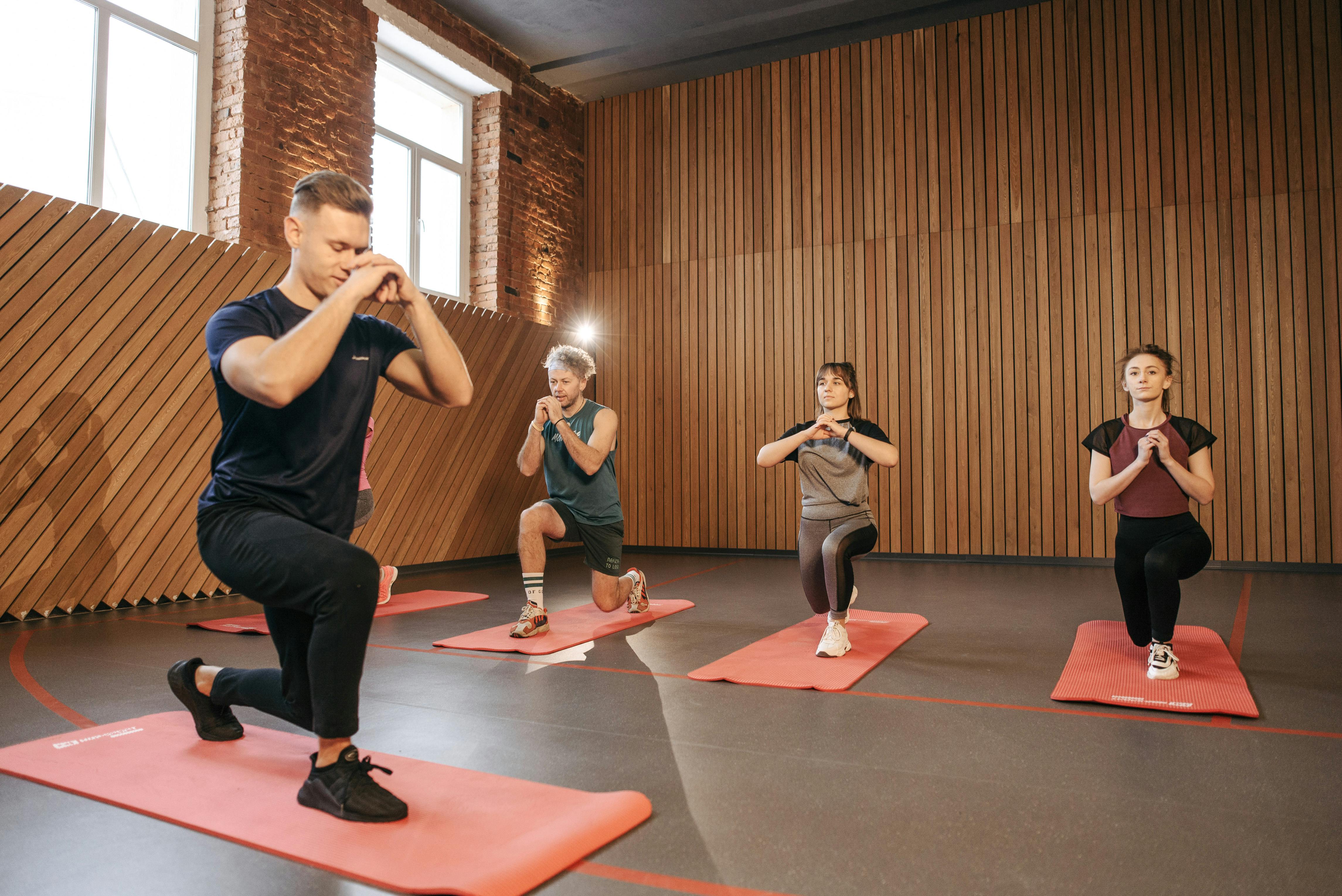
The half-kneeling position (one knee up, one knee down) is highly effective because it locks the hips and forces the core to generate strength without relying on the lower body. What it trains: Using a resistance band or cable, perform a diagonal 'chop' (high-to-low) and 'lift' (low-to-high) motion. This trains the oblique muscles and lower back to resist rotation and control dynamic movement. Why it helps: This pattern directly enhances the core stability needed for golf, yard work, or safely twisting to lift a child—activities that often injure the aging spine. It improves power transfer from your hips through your core to your arms, building resilient rotational strength while minimizing lower back risk. Aim for 3 sets of 8–12 controlled reps per side.
34. Habit Stacking: The "Movement Snack" Protocol
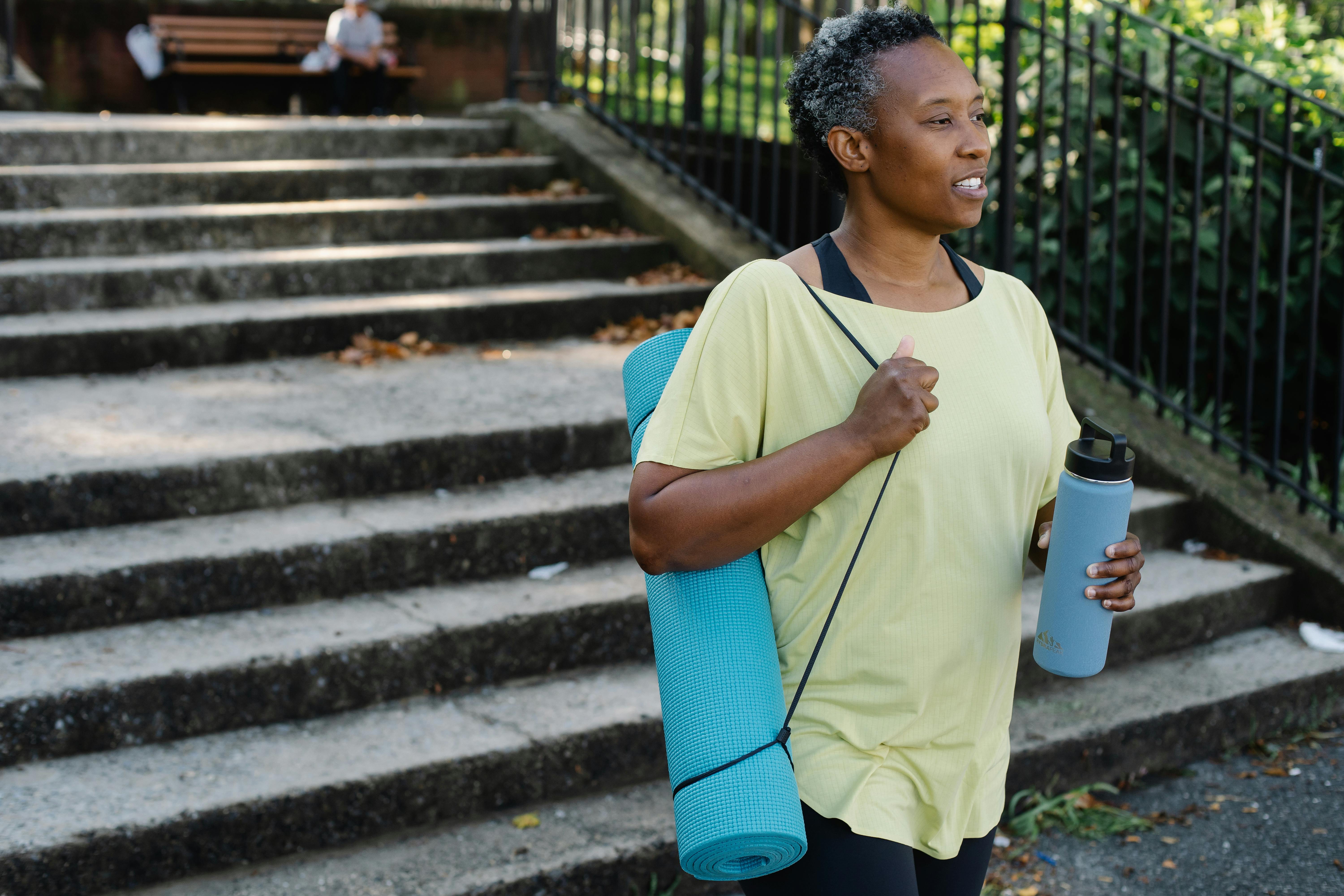
The greatest obstacle to strength after 40 is not the workout itself, but the tendency toward prolonged, sedentary periods that stiffen connective tissue, blunt anabolic signals, and degrade movement quality. Habit Stacking is a behavioral science technique that connects a new, small "movement snack" to an existing daily routine. For example: "After I fill my coffee cup, I will immediately perform 10 calf raises." Or, "Before I check email, I will immediately do 5 wall push-ups." These micro-workouts break up sitting time, maintain circulation, and increase cumulative muscle time-under-tension without requiring a dedicated gym block. By tying movement to an established, non-negotiable habit, you eliminate the mental drag of starting a workout. This consistent, low-dose stimulus combats the stiffness of connective tissue and ensures a steady trickle of positive, anabolic signals throughout the day, significantly boosting functional longevity.
34. Targeting Type I Muscle Fiber Resilience (The Slow-Twitch Insurance)

While power training focuses on fast-twitch (Type II) fibers, resilient aging requires robust slow-twitch (Type I) fibers. These fibers are crucial for posture, endurance, and resisting age-related muscle loss. The Method: Integrate specific, low-load work focused on high time under tension and minimal rest. Perform exercises like lunges or push-ups using 50% of your maximum weight and aim for failure in the 20–30+ rep range or use 60-second holds. This level of metabolic stress improves mitochondrial health and capillary density within the slow-twitch fibers. Training these fibers ensures muscle quality, enhances endurance for daily life, and builds a robust, fatigue-resistant foundation for all your heavier lifting.
35. Tibialis Raises: The Knee-Protector from the Ground Up

The Tibialis Anterior is the muscle on the front of your shin responsible for pulling your toes toward your knee (dorsiflexion). As we age, this muscle often weakens, leading to a "heavy" gait, increased tripping, and reduced shock absorption for the knees. Strengthening it is a unique "cheat code" for joint longevity. How to do it: Lean your back against a wall with your feet about 12 inches away. Keeping your legs straight and heels on the floor, pull your toes as high as possible toward your shins. Hold for one second, then slowly lower. Unlike many lifts, you can perform high reps (20+) of this move daily. By strengthening the "brakes" of your lower leg, you improve your ability to decelerate during walking or stair climbing, significantly reducing the impact on your knee joints and improving overall balance.
Conclusion: Make small, consistent choices that multiply into real strength
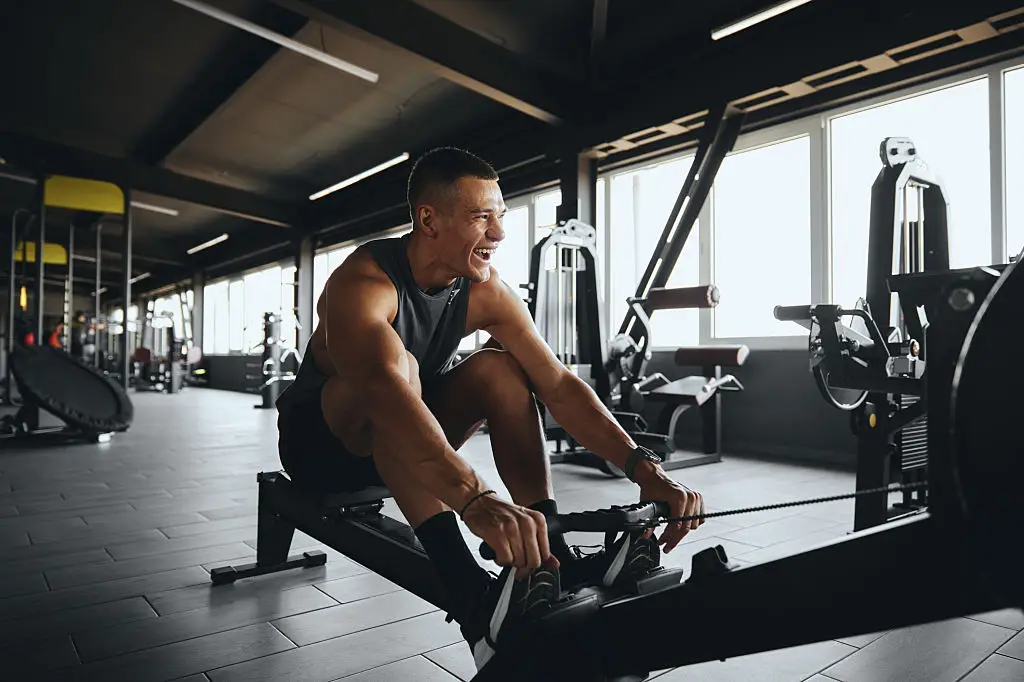
Strength after 40 is both a practical priority and a tangible goal. The moves and supports above form a complete toolkit: compound lifts like squats and hip hinges build base strength; pushing and pulling movements protect posture; single-leg work and loaded carries improve balance and functional capacity; and plans for progression, nutrition, and recovery create the conditions where muscle can grow. Science and practitioner experience agree—a consistent, progressive plan over 12 weeks produces measurable improvements in strength and function. Start with realistic sessions three times per week, prioritize form, and match your nutrition to support muscle repair. Celebrate the small wins: an extra rep, a longer plank hold, or a steadier step down a curb. If you need personalized help, a short course with a qualified trainer or a physical therapist can provide safety and speed gains. Above all, approach this as a lifetime practice. Strength adds years to activity, and activity adds life to years. With gentle consistency and the right priorities, you can keep moving with confidence and enjoy the things that matter most.
